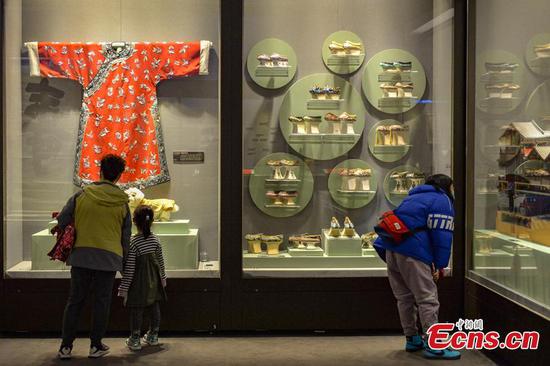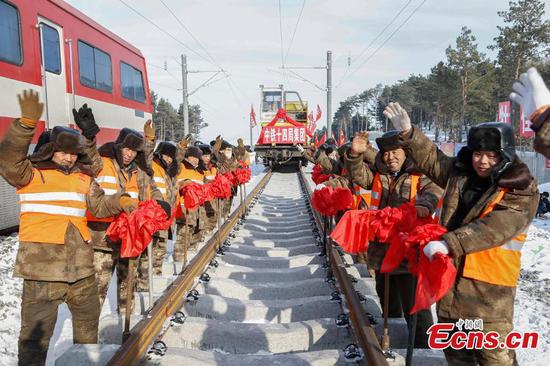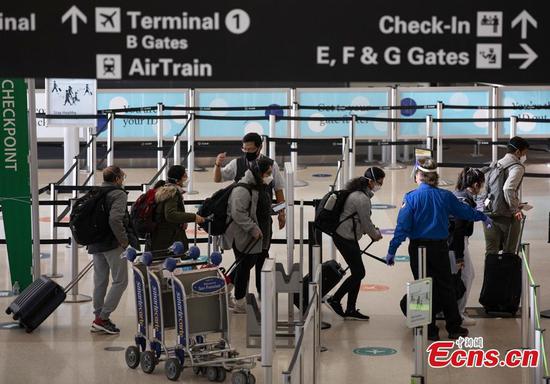
One of 103 China's homegrown regional jetliner ARJ21-700 planes uses the BeiDou Navigation Satellite System (BDS) for the first time in a test flight at Shengli Airport in Dongying City, east China's Shandong Province, Oct. 14, 2017. (Xinhua/Ding Ting)
China's satellite navigation and positioning industry gained a total output value of 345 billion yuan (about 52.8 billion U.S. dollars) in 2019, according to a recent report.
The sector's output value is expected to hit 400 billion yuan in 2020, according to the report released by the China Satellite Navigation Office on the construction and development of the BeiDou Navigation Satellite System (BDS).
Over the past decade, China has seen the total output of its satellite navigation and positioning industry grow by an annual average of more than 20 percent, read the report.
The country has cultivated a booming satellite navigation and positioning industry, with a complete industrial chain.
China officially commissioned BDS on July 31, opening the new BDS-3 system to global users.
Along with positioning, navigation and timing services, the BDS-3 system can provide a variety of value-added services like global search and rescue assistance, short message communication, ground-based and satellite-based augmentation, as well as precise point positioning.
BDS has provided comprehensive services for sectors such as transport, public security, disaster relief, agriculture, forestry and urban governance, read the report.
BDS has also helped improve the efficiency of the country's agriculture and forestry industries, which are both labor-intensive. Roughly 45,000 sets of BDS-based automatic driving agricultural machinery are working nationwide, cutting labor costs by 50 percent.
In addition, BDS-based machinery monitoring platforms and Internet of Things platforms are serving approximately 400,000 sets of agricultural machinery.
In forestry, BDS positioning and short message communication functions have been extensively applied to forest fire prevention, natural forest protection, resource investigation and pest control.
BDS navigation, positioning and short message communication functions are also playing roles in disaster reduction and relief. It is capable of providing real-time command and dispatch, emergency communication, rapid reporting and information sharing services, among others.
Technologies based on BDS and its integration with other global navigation satellite systems are strengthening China's capabilities in monitoring and providing early warnings for geological disasters.
Multiple forecasts and early warnings for natural disasters successfully saved people's lives and property during severe floods this summer, read the report.
BDS has been deeply integrating with emerging technologies and playing significant roles in the fight against COVID-19. BDS-based UAVs and unmanned vehicles were used to deliver medical supplies to epidemic-stricken areas.
It has also remarkably enhanced the country's comprehensive traffic management in both efficiency and safety. By the end of October, around 7 million commercial road vehicles had been installed with BDS, accounting for 96 percent of road vehicles in operation.
BDS is one of four global navigation satellite systems, alongside the GPS of the United States, Galileo of the European Union, and GLONASS of Russia.
"China has been sharing BDS achievements with the world in an open and cooperative manner, coordinating and collaborating with other satellite navigation systems," said Ran Chengqi, director of the China Satellite Navigation Office.
BDS is now serving global users by providing solutions in diversified fields such as the land right confirmation, precision agriculture, digital construction, vehicle supervision, and smart port management, according to the report.


















































